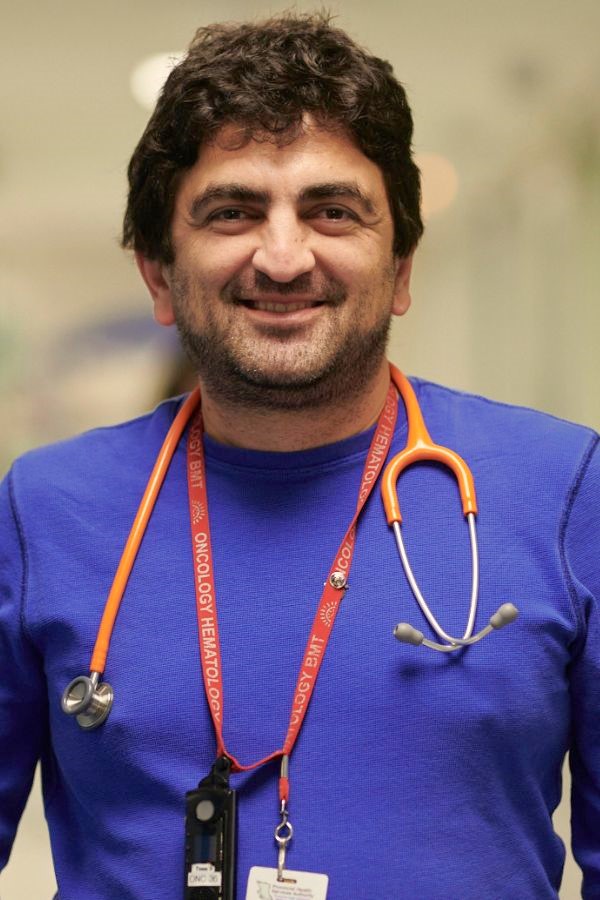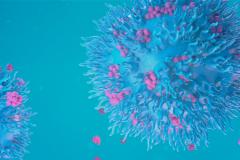
Four out of five children diagnosed with cancer survive over the long term after treatment, but for 20 per cent of them, standard treatment is not enough. To improve outcomes for these kids, researchers at the Michael Cuccione Childhood Cancer Research Program at BC Children’s Hospital Research Institute (BCCHR) have been working for over a decade on the BC Pediatric Personalized OncoGenomics (PedsPOG) study, using genomics to identify treatments specific to an individual child’s cancer. In a paper recently published in Nature Communications, they showed that new therapeutic options can be identified when scientists have access to a child’s sequencing of both RNA and DNA — instead of DNA alone.
Two of the researchers leading the study are Dr. Rebecca Deyell and Dr. Rod Rassekh, both investigators with the Michael Cuccione Childhood Cancer Research Program at BCCHR and clinical associate professors in the Department of Pediatrics at the University of British Columbia (UBC). This study was also made possible thanks to BC Cancer Foundation, BC Children's Hospital Foundation, and Team Finn Foundation. It is the result of a collaboration with the BC Cancer POG program and a number of researchers and health-care professionals. Together they identified possible therapeutic targets for 96 per cent of the participants in the study. Additionally, 15 per cent of the children involved in the study had a genetic variant that predisposed them to developing cancer, suggesting that other members of their family may be at higher risk.

Why is the adoption of combined sequencing and germline testing beneficial to care for children with hard-to-treat cancer?
Rod Rassekh: DNA is the coding in our chromosomes that makes up who we are. When our cells need a protein, an RNA copy is made of the relevant DNA strand, which is then translated into the amino acid components of the protein. The more RNA that is made, the more protein is created. The difference is crucial because while DNA can tell us what might be wrong in the genetic “recipe”, RNA can determine how much protein is produced and where. Our study revealed that it’s necessary to look at the levels of RNA in a child’s tumour and compare it to that of a healthy cell or other cancers to see if there’s a difference that can be addressed therapeutically. We can also use RNA information to learn the extent to which immune cells have invaded a tumour, as this can indicate whether a patient may respond to immunotherapy. When we first started using whole genome analysis, the focus was on DNA, which has been well studied. But RNA has always been harder to interpret because it’s so much more fragile than DNA. Quantifying RNA accurately requires fresh tissue or for tumour samples to be frozen immediately after a biopsy.
Rebecca Deyell: Germline testing is done on non-cancerous cells to look for a potential genetic mutation that can increase the risk of developing cancers in the first place. This analysis not only allows for early identification of new cancers in our patients, but also provides family members with a chance to get tested to find out if they carry the same mutation.
If we offer germline testing for every child with cancer in our care, we will be better able to pick up cancers early for both them and other family members if they choose to get tested.
We’ve been with these families on their journey and we want to see them thrive!
Why isn't WGTA the standard of care?
RD: In certain places, it is: the province of Québec offers comprehensive genome sequencing and clinicians in Ontario are working on submitting a proposal to their Ministry of Health, similar to what we’re doing in BC. We’re also joining forces through national programs such as PRecision Oncology For Young peopLE (PROFYLE) and Advancing Childhood Cancer Experience, Science & Survivorship (ACCESS). I’m co-leading the clinical trials group for ACCESS, and we hope to open more targeted therapy trials to support children across Canada.
RR: We’ve put together a case for adopting whole genome and whole transcriptome sequencing as the standard of care for all kids in BC.
As the price of genome sequencing comes down, it might actually be more expensive to limit ourselves to looking at one gene at a time rather than sequencing a child’s entire tumour at diagnosis.
In pediatrics, we have about 140 new patients with cancer every year. That’s not a huge number in the health-care delivery model. Having the sequencing information is valuable and can help prepare us to achieve the best outcomes for every child.
Earlier you mentioned that DNA has been well studied in association with whole genome sequencing. What are some of the well-known DNA changes that are linked with cancer?
RR: Cancer cells don’t usually have the same number of chromosomes that healthy cells do. Pathologists know about common translocations (chromosome swaps) and mutations in cancer genes, so they look at very specific parts of DNA. In North America, we have the Children’s Oncology Group, which puts together clinical trials for all the pediatric cancer types. This group has enabled us to deliver standardized treatments for kids in our region and pushed cure rates up to 84 per cent. But as we started doing sequencing, we learned that not all kids should be treated based only on their cancer type, but also on DNA and RNA information. We feel strongly that a broad examination could capture information that targeted looks would miss, so we hope to make whole genome and transcriptome sequencing the standard of care because having the RNA and DNA information from a child’s tumour would allow us to select medications that target specific pathways and potentially save more lives.
What is the key to supporting access to novel therapies, moving from research to clinically approved and funded testing? What are the barriers?
RD: The key is to show that our findings can impact the outcomes. In early phases of clinical trials, there isn’t yet sufficient evidence that novel targeted therapies work but, in the past 10 years, I’ve seen novel therapies become the standard of care. Patients have seen their tumours shrink and their quality of life improve.
RR: With the health-care system being stretched, one barrier to supporting access to novel therapies is cost. Finding tumours before patients need treatment lowers costs. A second barrier is knowledge of genetics among health-care providers, particularly because of the challenges of keeping up to speed with a rapidly evolving field of knowledge, as many oncologists were trained before widespread access to sequencing. However, Dr. Deyell and I can help our colleagues in the interpretation of the molecular findings. We’ve been fortunate to be a part of POG, sit on the Molecular Tumour Board every week, and be able to discuss our cases and potential options to treat our patients. A third barrier is knowledge of how to use the data and access the drugs our patients need when some of the targeted treatments are still in the research phase.
What are the next steps?
RD: We’re advocating for the adoption of germline (healthy cell) and cancer cell testing as the standard of care for all children in BC diagnosed with cancer. It’s our job as researchers to prove its benefits, so we’ve been working with the Provincial Medical Genetics Program at BC Children’s Hospital and the Hereditary Cancer Program at BC Cancer to move forward a proposal to offer the testing to every child with cancer and those long-term survivors of childhood cancer in BC.
RR: It’s essential to define guidelines around patient and family consent and education for everyone involved, including health-care providers. We need to help families understand what we’re testing because some people may not want to know they carry a mutation. Another important piece of education is the quantification of risk and how to interpret it. Our working group is trying to determine the best way to educate the public on what a positive result may mean for them.




